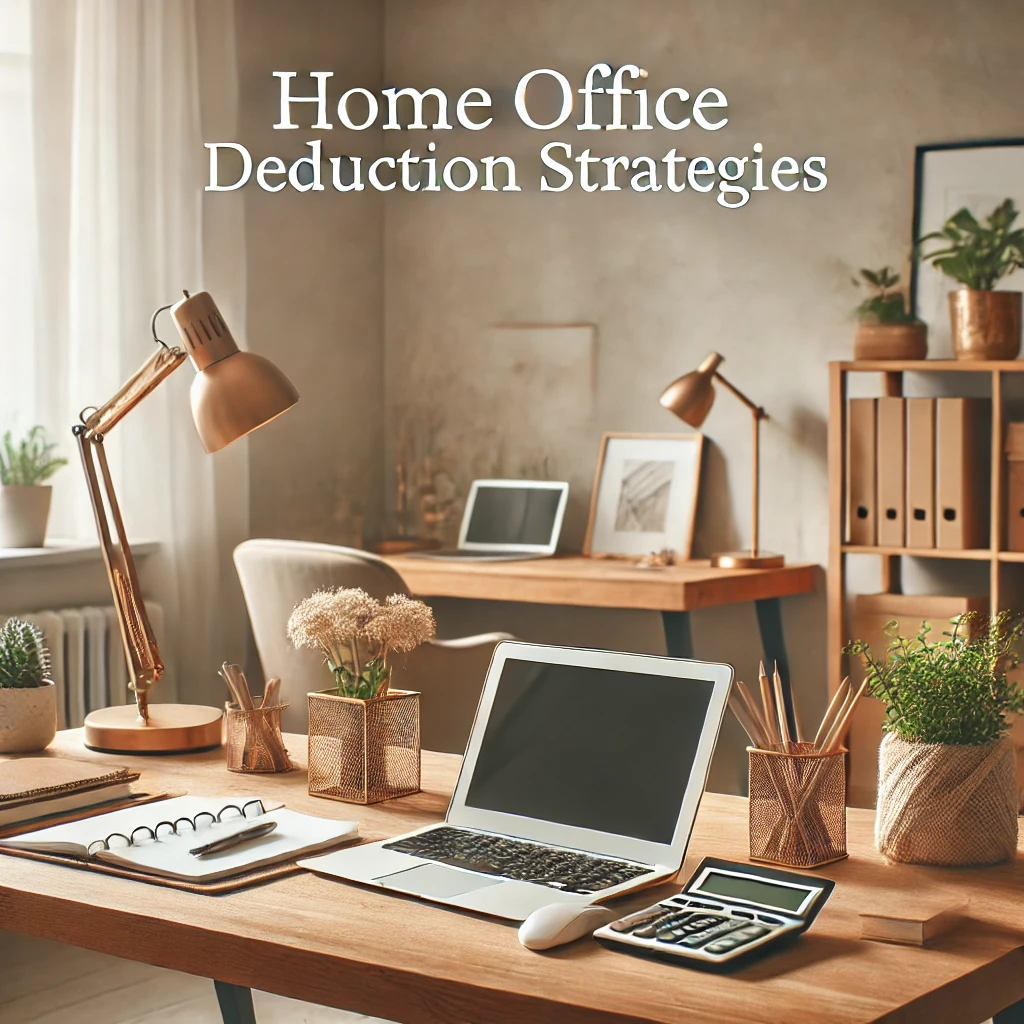
Maximizing the home office deduction can be a highly effective tax-saving strategy for small business owners, particularly if they qualify for the deduction by using a dedicated area in their home exclusively for business purposes. If you are not a small business owner, you should consider starting a side business, due to some of the amazing deductions business owners receive. Here are specific strategies to make the most of this deduction:
1. Use the “Simplified” vs. “Regular” Deduction Method
- Simplified Method: This allows a deduction of $5 per square foot, up to 300 square feet, with a maximum deduction of $1,500. It’s easier to calculate and report.
- Regular Method: With this method, you calculate actual expenses, including mortgage interest, utilities, insurance, repairs, and depreciation, based on the percentage of your home used for business. If you have high expenses, the regular method could yield a larger deduction.
- Strategy: Compare both methods annually to choose the one that maximizes your deduction, as the IRS allows you to switch each year.
2. Allocate Shared Costs Carefully
- Home expenses like electricity, heating, mortgage interest, and property taxes can be allocated based on the percentage of home space used for business. For example, if your office occupies 10% of your home, you can deduct 10% of these shared expenses.
- Example: If your annual utility bill is $3,000, and your home office occupies 10% of your home, you can claim $300 ($3,000 x 10%) as part of your deduction.
- Tip: Accurately measure your office space and document its use exclusively for business to justify the allocation percentage.
3. Include Indirect Home Office Expenses
- In addition to direct costs for your office space (like painting or carpet installation), you can deduct a portion of broader home-related expenses like maintenance, repairs, or HOA fees.
- Example: If you install a new HVAC system costing $5,000, you can deduct a portion (say 10%, for a 10% business-use allocation) of this expense, or $500, as an indirect home office expense.
- Tip: Keep records of these costs, as home improvements could add up significantly.
4. Maximize Depreciation for Ownership Benefits
- Depreciation allows you to deduct a percentage of your home’s basis each year (the cost of the property excluding land). The business-use percentage of the home office determines how much depreciation can be claimed.
- Example: For a home with an adjusted basis of $200,000 and 10% business use, you may deduct $500 (2.5% of $20,000) annually over 39 years.
- Tip: Depreciation can be complex, so consult a tax advisor to determine the amount and consider its long-term effects, as recapture tax applies if you sell the home.
5. Track Your Office-Specific Expenses
- Expenses exclusively related to your home office, such as office supplies, furniture, and equipment, can be deducted in full. For large items, consider Section 179 expensing or bonus depreciation for immediate full deductions.
- Example: If you purchase a $2,000 office desk, you can generally deduct the full amount if it’s used 100% for business.
- Tip: Document all purchases and keep receipts for items used exclusively in your home office.
6. Internet and Phone Usage Allocation
- Deduct a percentage of internet and phone expenses if they’re used partially for business. If you have a second line or higher-speed internet specifically for business, those costs can be fully deductible.
- Example: If you spend $120/month on internet and use 30% for business, you can deduct $36/month, totaling $432 for the year.
- Tip: Tracking phone/internet use separately for business purposes helps maximize this deduction without overestimating business usage.
7. Consider Rent or Mortgage Costs (for Renters and Owners)
- Renters can deduct the business-use percentage of their monthly rent. Homeowners can deduct a portion of mortgage interest and property taxes, even beyond the home office deduction.
- Example: For a renter paying $2,000 per month, 10% home office use allows a $200 monthly deduction.
- Tip: Keep in mind that a home office deduction for mortgage interest is separate from the Schedule A mortgage deduction, allowing you to benefit twice if you itemize deductions.
8. Leverage Home Office Deduction for S-Corp Owners
- If you operate as an S-Corp, rather than taking a home office deduction directly, consider a “home office reimbursement arrangement.” Under this arrangement, the business reimburses you for home office expenses, providing a tax-free benefit to you while the business deducts the expense.
- Example: Calculate your home office expenses and submit them as a monthly expense report. Your S-Corp reimburses you, providing a tax-free cash flow benefit.
- Tip: Set up an accountable plan for clear documentation and eligibility.
9. Deduct Home Office Expenses Even for Part-Time Use
- Even if you use your home office part-time, you can still claim the home office deduction as long as the space is used regularly and exclusively for business. You don’t need to work full-time from the home office to qualify.
- Example: A part-time consultant using 10% of their home exclusively for client calls and project work may still take a deduction based on that space allocation.
- Tip: Track hours or days you work from your home office if part-time, as records help validate your deduction.
10. Review IRS Guidelines Annually for Updates
- IRS rules can change regarding home office deductions, particularly around what qualifies as business-exclusive use and indirect expense calculations.
- Tip: Each year, check IRS guidelines or consult a tax advisor to make sure you’re in compliance and taking the full deduction.
These strategies, when applied accurately and documented properly, can help you maximize the home office deduction and save significantly on taxes. Each expense type, allocation percentage, and method should be reviewed annually, considering changes in both business use and tax law.
*Make sure to consult with your CPA or tax professional. Our blog is for informational purposes only and not considered tax advice.
